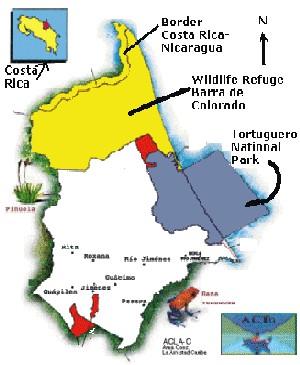Alexander Gomez Lepiz
This research has the following goals:
a) Identify the habitats that are being used by the Manatee in order to relate this selection to the variables associated to each habitat,
b) Determine the influence of the tide dynamic on the daily Manatee movements of the Manatee and
c) Identify daily activity patterns and long-distance movements of the Manatees.

West Indies Manatee (Trichechus manatus) is considered a species endangered of extinction, included in Appendix I of CITES. Also it is catalogued as one of the 9 species endangered of extinction by the article 25 of the Wildlife Law of Costa Rica; thus its protection and its habitat and population recovery are vital in order to let the species remain as part of the megafauna of the country. The study area is located in the Tortuguero Conservation Area, within the Costa Rica’s protected area system.
The Manatee stands out as a local conservation symbol of these highly biodiverse ecosystems. The current knowledge on the West Indies Manatee in tropical conditions is poor, the way they live and where the perform their activities are unclear due to their elusive behaviour and the poor visibility in the waters in which they move.
A radio telemetry equipment its been acquired for tracking down at least 4 radio-collared Manatees (VHF and sonic transmitters), through intensive sessions of 24 hours of data collection, including day and night schedules. This equipment will be used to answer accurately questions regarding ecological aspects about the species behaviour.